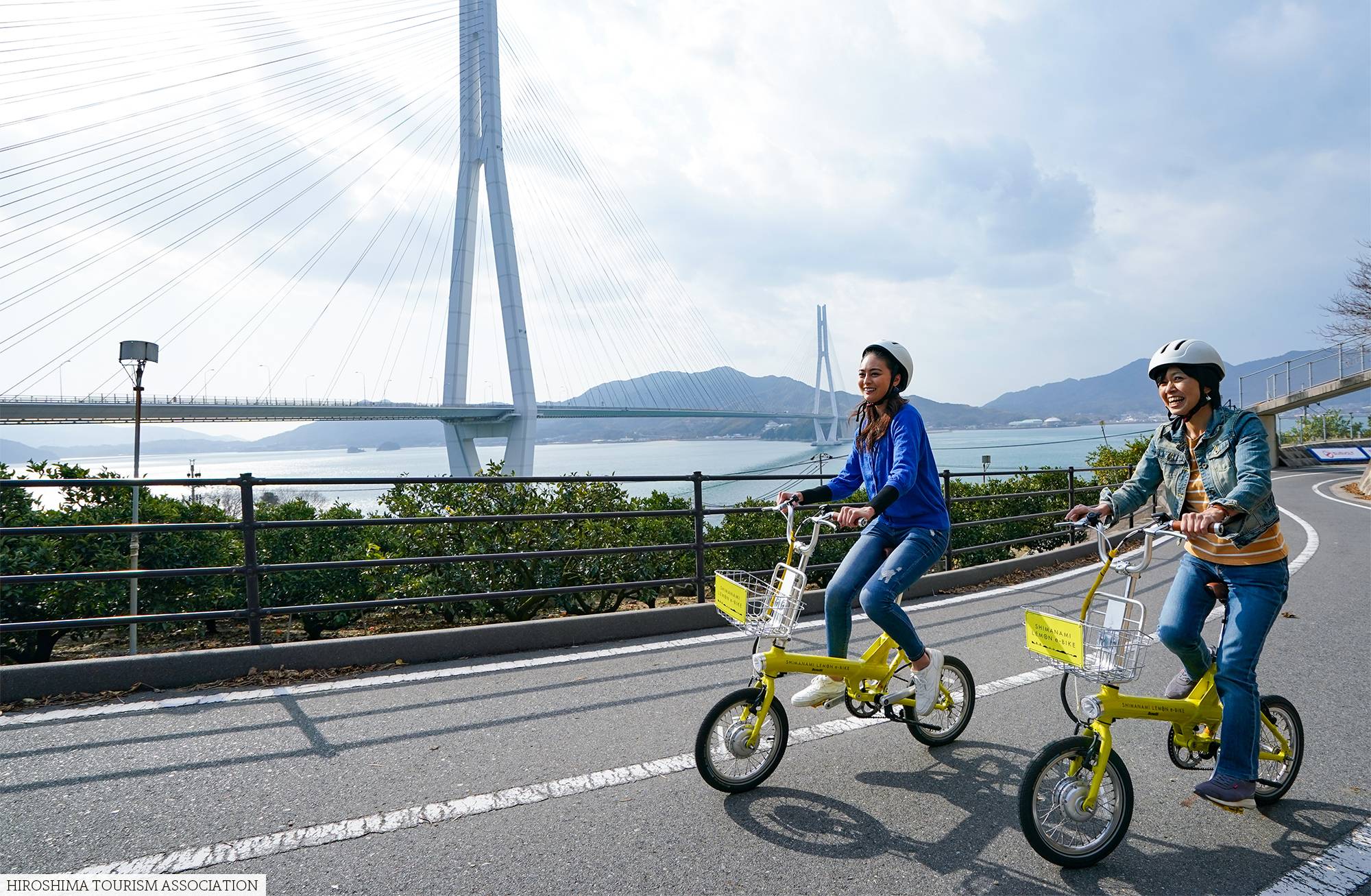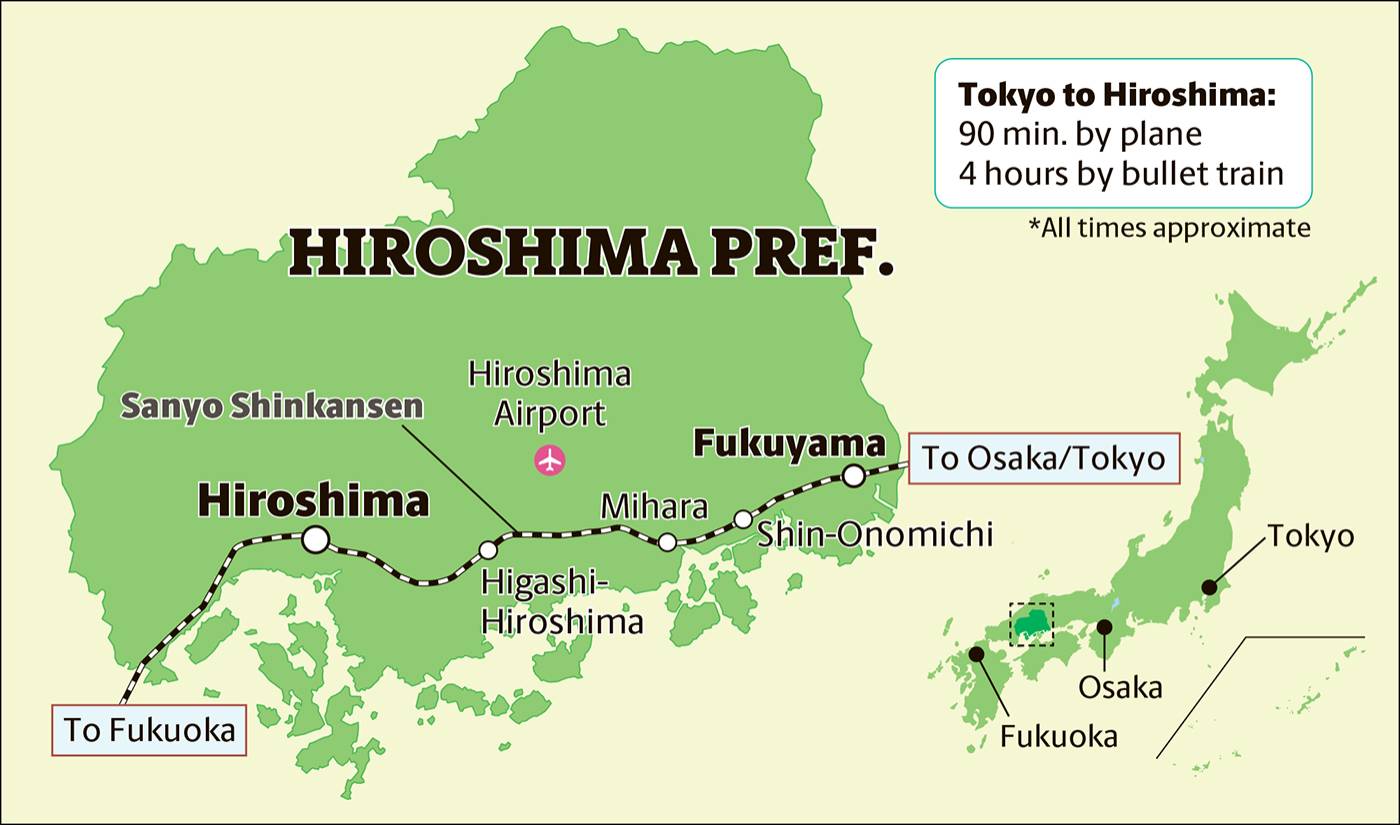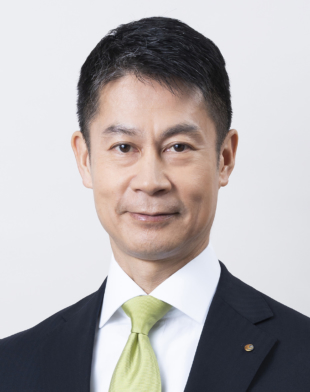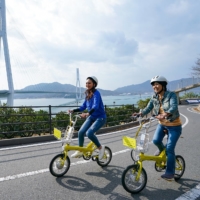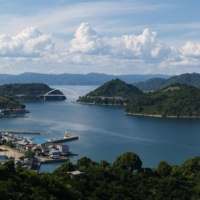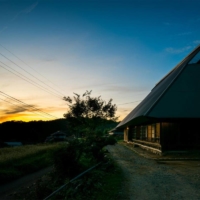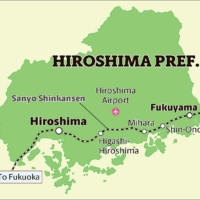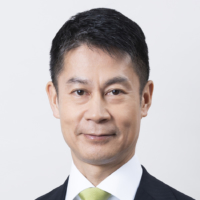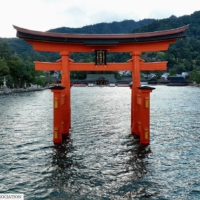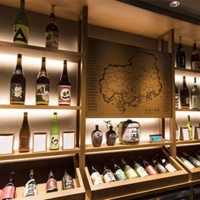Overlooking the Seto Inland Sea and surrounded by the Chugoku Mountains, Hiroshima is full of secluded nature spots, exquisite food that makes use of the bounties of the land and sea, traditional Japanese culture, and other world-class attractions that are sure to impress the dignitaries attending the G7 Summit set for May 19 to 21. For those who have yet to discover the city, here are a few of the historical sites and sightseeing spots it has to offer.
City of peace
Hiroshima, the first city to suffer an atomic bombing, has spent more than seven decades appealing for the realization of permanent world peace and the abolition of nuclear arms, as well as conveying the reality of the bombing. The devastation caused by nuclear weapons has been preserved through several memorial establishments, including the Genbaku (A-Bomb) Dome, a UNESCO World Heritage Site. Before the atomic bombing, the Genbaku Dome was the Hiroshima Prefectural Industrial Promotional Hall, where local products were displayed and sold. It is one of the few buildings remaining near ground zero.
The 12.2-hectare Peace Memorial Park, where the A-Bomb Dome is located, attracts countless visitors from around the world each year. The Hiroshima Peace Memorial Museum located within the park conveys the reality of the damage caused by atomic bombs to people of all nations, contributing to the abolition of nuclear weapons and the realization of lasting world peace, which Hiroshima wishes for with all its heart. The permanent exhibit consists of personal belongings left behind by the victims, photographs and other materials that convey what happened on the morning of Aug. 6, 1945.
Many islands
Notably, there’s a high-speed boat service connecting the park with the island of Miyajima, Hiroshima’s other World Heritage Site and a prime example of the treasures of the Chugoku region.
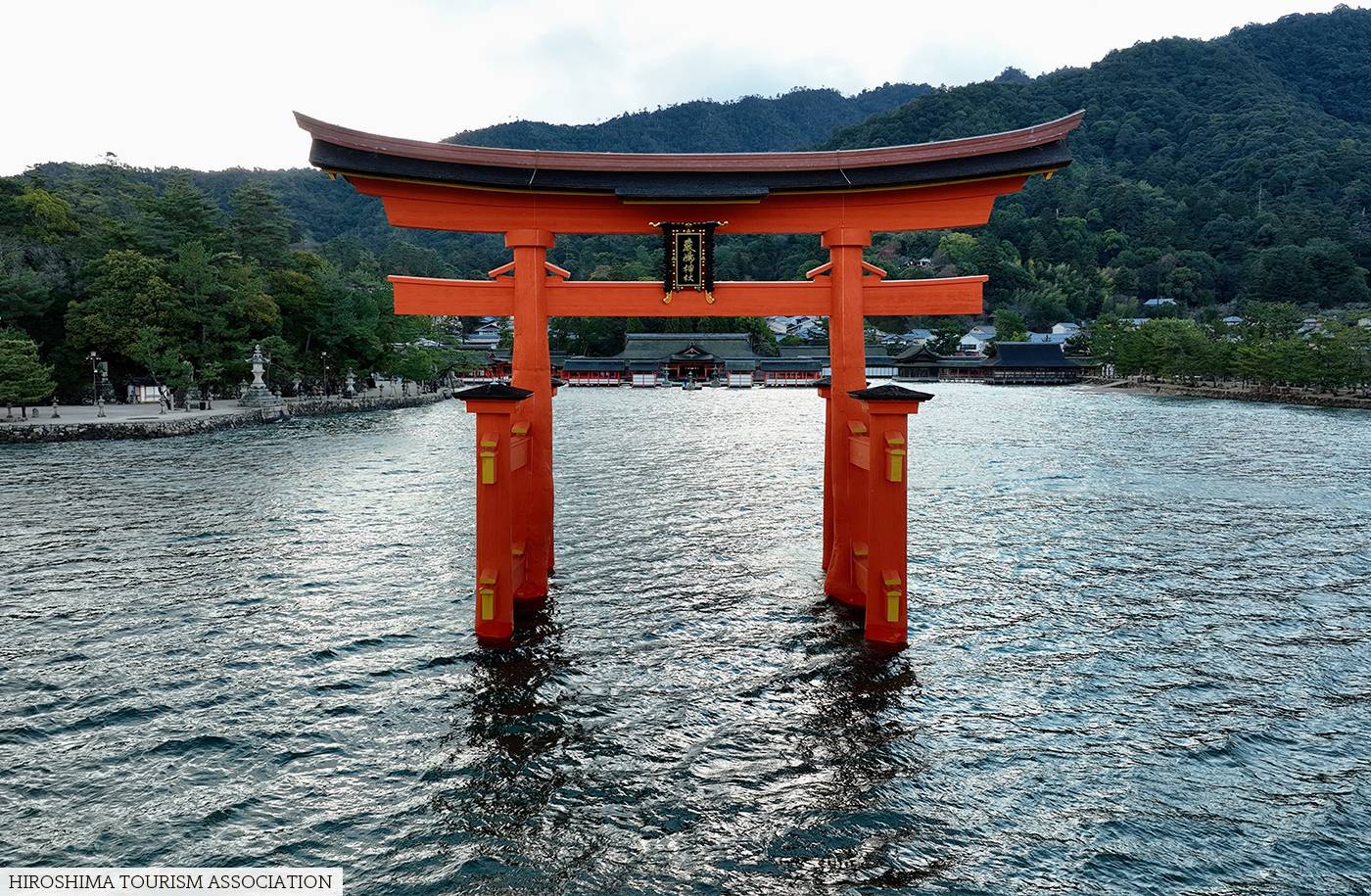
Located in the northwestern part of Hiroshima Bay, Miyajima’s spectacular Itsukushima Shrine is one of the most famous places of Shinto worship in the world, thanks to its torii gate being built over water, which makes it look as if it were floating on the surface of the sea during high tide.
Legend has it that Saeki Kuramoto, a member of a clan that ruled the area, founded Itsukushima Shrine in 593. It is said that the renowned monk Kukai trained at Miyajima’s Mount Misen and founded a temple there in the ninth century. After famed military leader Taira no Kiyomori became the local governor, he had the shrine restored in 1168 and made it a popular pilgrimage site for nobility, the imperial family and his own Heike clan, who have all contributed greatly to the splendor of Miyajima.
Notably, the island also has a strong connection with France. In 2008, the two countries celebrated 150 years of diplomatic relations, which have resulted in the strengthening of ties between France’s Mont-Saint-Michel Benedictine abbey in Lower Normandy and Miyajima. The two have a lot in common. Both are World Heritage Sites on the sea and both have been known as sacred places of worship for over 1,000 years, with the abbey’s beginning going back to 966. Using these similarities as a stepping stone on the road to friendship, the city of Hatsukaichi, which Miyajima is a part of, and Mont-Saint-Michel signed a sister city affiliation in 2009, promising to promote each other’s tourism and to organize joint events in the future.
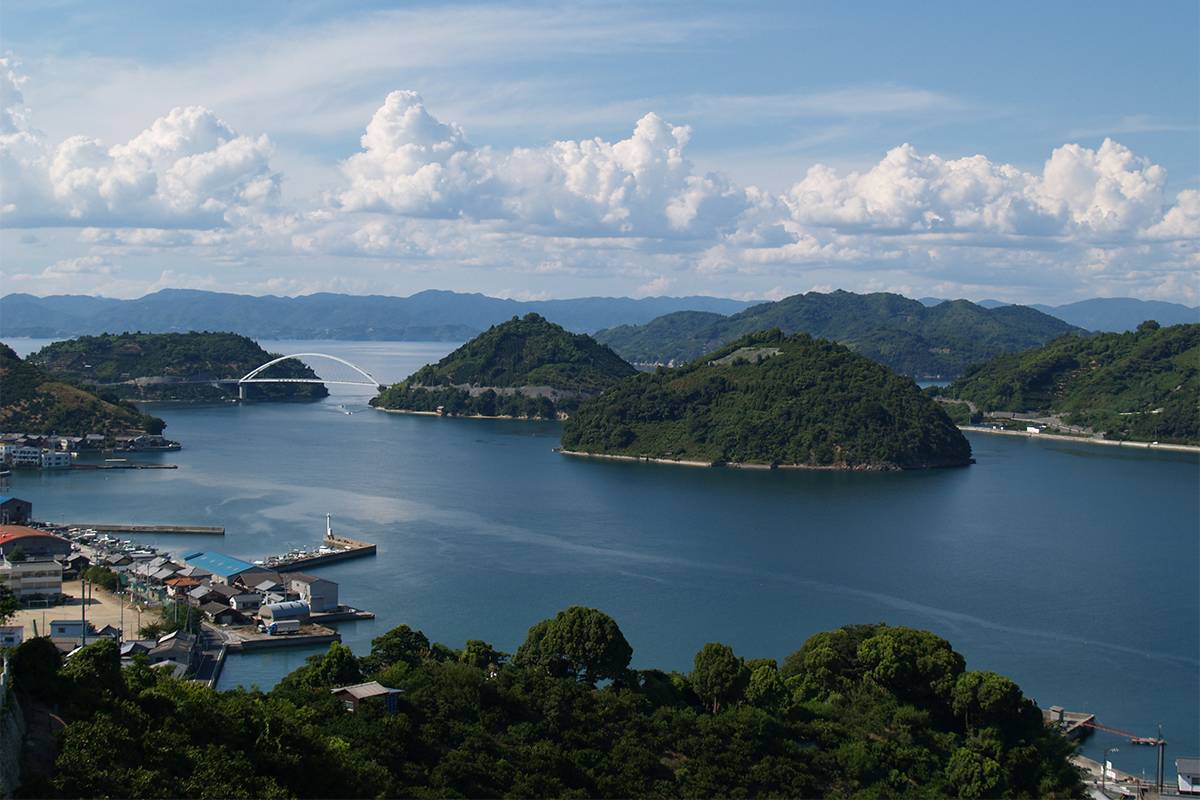
Miyajima is just one of about 700 islands in the Seto Inland Sea, 171 of which are part of Hiroshima. Each island is like an emerald gem of lush greenery rising above the water with gentle yet majestic elegance. It’s not surprising that they have been considered wonders of the world among European and American travelers since the early Meiji Era (1868 to 1912). Today, it’s possible to journey through them by boat, bike or car. Cyclists will definitely want to check out the Shimanami Kaido route connecting Onomichi in southeastern Hiroshima Prefecture to Imabari in Ehime Prefecture across many of Hiroshima’s islands.
While the Shimanami Kaido offers stunning views of Hiroshima’s many islands, the roughly 70-km main route might be too much for beginners. Fortunately, many shorter courses, some that can be enjoyed on e-bikes, are also available. Other destinations include Okunoshima, a small island accessible only by ferry, also known as “Rabbit Island” because of its many rabbits, as well as Sensui Island, which is said to intoxicate even the most powerful hermits with its natural beauty. Then there is Ikuchi Island, a great place to enjoy picking citrus. Those are just some examples of the Hiroshima pearls scattered around the Seto Inland Sea.
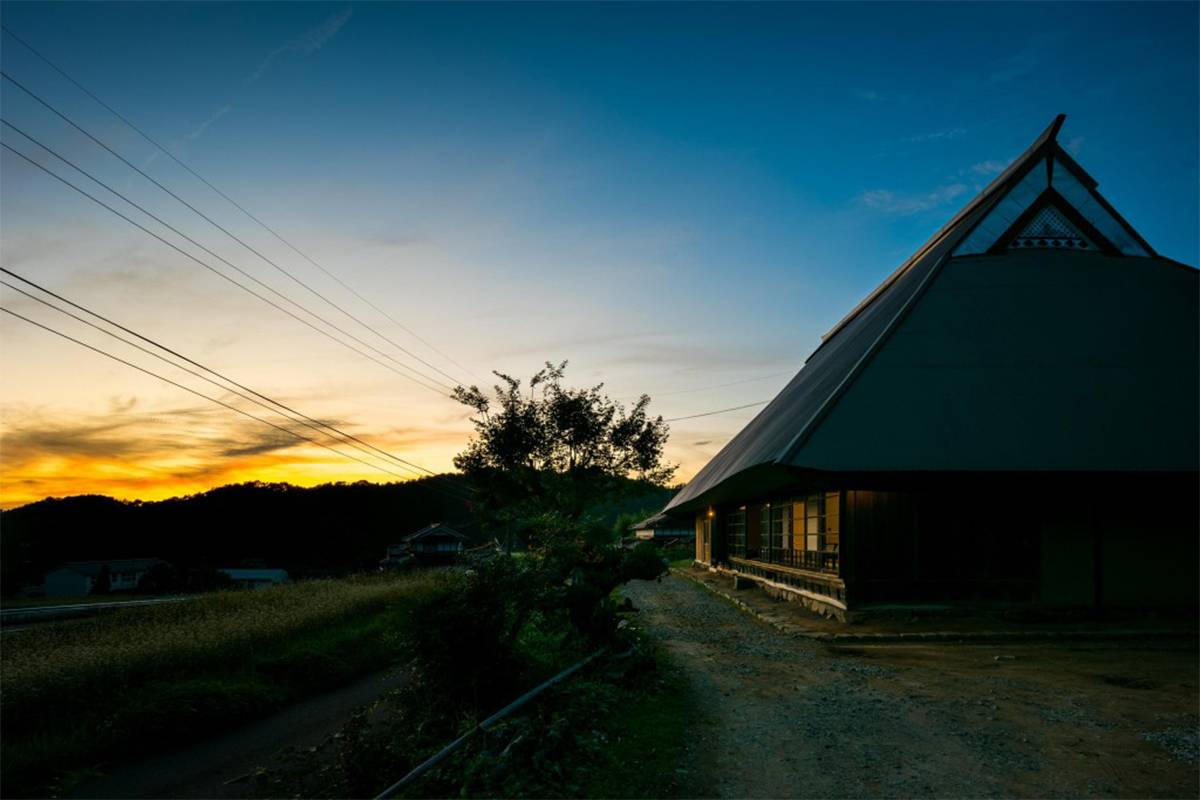
Splendor of satoyama
Hiroshima is also known for satoyama, which generally refers to areas where residents coexist with and take care of the natural environment. In recent years, such areas have become popular among people looking for sustainable tourism experiences, such as those offered by Hiroshima’s many traditional lodging facilities. Some of these facilities are available in scenic Shobara. You can find several traditional Japanese houses that guests can rent out for unforgettable stays in nature.
These renovated accommodations are over 100 years old and allow guests to take a trip back in time while enjoying the traditional landscapes of Hiroshima in a private setting. There’s also a popular campground in the area with treehouses, tree adventures and other fun activities, as well as accommodations offering majestic views of Mount Hiba, Mount Azuma, the Saijo River and other features of the region.
Bounties of land and sea
Hiroshima Prefecture is the ancestral land of world-famous wagyu that is known for its quality flavors, tenderness and delicate marbling. Since ancient times, iron smelting has flourished here, with strong-legged cattle having been utilized to transport large amounts of furnace wood up steep hills. Over time, local residents bred better and better cattle led by specialists in raising strong and easy-to-handle livestock, and Hiroshima cattle became the forerunners of wagyu, including delicious Hiba gyu (beef).
One cannot talk about Hiroshima food without mentioning its sea bounty. The part of the Seto Inland Sea around Hiroshima is relatively shallow. Thanks to that and its many mudflats and seaweed beds, it has become a “cradle” where various fish spawn and grow. In addition, because the water temperature varies greatly depending on the time of year, there is an abundance of delicious seasonal fish available in Hiroshima year-round. The conger eel is especially recommended, as it’s rarely served as sashimi outside of Hiroshima Prefecture, offering visitors a unique seafood experience.

Hiroshima Prefecture boasts the largest production volume of oysters in Japan. The area around Hiroshima Bay provides an ideal environment for oysters to grow, thanks to all the natural nutrients that flow into it via rivers large and small. The bay is surrounded by many islands and capes, which create gentle waves and moderate tides that contribute to the prefecture’s high shellfish yield.
Hiroshima oysters may have small shells but their meat is large, plump and full of flavor. In recent news, the first batch of Hiroshima oysters bound for Paris was shipped in February after a local supplier was certified under the hazard analysis and critical points international standard for food sanitation management. The supplier aims to ship as much as 30 tons of the delicacy to the EU this fiscal year.
Hiroshima sake is also worth mentioning as it is the product of technological innovation. It has been a long road, but Hiroshima is now firmly established as one of the three major sake-producing areas of Japan. Hiroshima Prefecture is known for its soft water, which is low in minerals that nourish yeast and was long thought to be unsuitable for sake brewing. However, in 1898, brewery owner Senzaburo Miura published a treatise on how to reform brewing methods, including information on how to effectively make use of Hiroshima water. Thanks to him sharing his knowledge of sake production techniques with his colleagues, the quality of sake around Japan greatly improved. Before that, in 1896, Riichi Satake, the founder of an agricultural equipment manufacturing company, invented Japan’s first power-driven rice-milling machine. This led to the creation of an entirely new category of sake called ginjo, in which the rice is polished to less than 60% of its original weight to refine the flavor of the sake.
Shizuhiko Kimura also contributed to the development of Hiroshima alcohol, founding a sake brewing company and a brewing engineer training school in 1918. Thanks to them, Hiroshima sake is now on a par with sake from Nada and Fushimi in Hyogo and Kyoto prefectures, respectively.
In recent years, Hiroshima has also become famous for its wine, the quality of which is thanks in large part to the considerable temperature difference between day and night, producing high-sugar-content grapes with good red coloring as a result. Today, it can be mentioned in the same breath as wines from famous production regions around the world, and has even won a gold medal at the International Wine and Spirit Competition.
Having become a beacon of peace since its recovery, Hiroshima has also established itself as a popular sightseeing destination among visitors from Japan and abroad. The delightful culinary offerings, historical sites and traditional ways of life, and the stunning natural environment are all waiting to be experienced. Those who make the journey know what a truly special place Hiroshima is.
This page is sponsored by the Hiroshima Prefectural Government.
Dedicated to preserving peace
by HIDEHIKO YUZAKI
HIROSHIMA GOVERNOR
I am extremely grateful that Hiroshima has the opportunity to host a G7 Summit and would like to extend a heartfelt welcome to leaders of the countries visiting this city, members of the media community visiting from countries around the world, and all who are involved in the summit.
After experiencing utter devastation by the first nuclear bombing in human history, Hiroshima staged a remarkable reconstruction driven by the tenacity and the spirit of mutual help of its people and their wish for global peace.
Hiroshima has an abundance of resources, including a rich traditional culture, thriving industries and beautiful nature. These have been born, refined and inherited, at times overcoming wide-ranging difficulties, including a crisis of resource decline.
Furthermore, Hiroshima has a wide variety of delicacies from the land and sea, which are blessed with diverse climate conditions that range from islands in the south filled with sunshine to snow-covered mountains in the north. We also produce excellent wines and sake. Popular destinations for cyclists and an active sports scene further add to Hiroshima’s many charms.
There are many stories one may not hear elsewhere regarding Hiroshima’s attractiveness and history that have developed over many years. My wish is that many people from around the world can meet the people, food, culture, traditions and nature of Hiroshima by visiting in person.
At this summit, restoring and maintaining peace will be at the top of the agenda. Hiroshima symbolizes the inhumane nature of the destruction of nuclear weapons as well as the prosperity that peace can bring about. My wish is that the G7 Summit will show the determination with which we chose the latter and found a way to realize the peaceful world without nuclear weapons.



